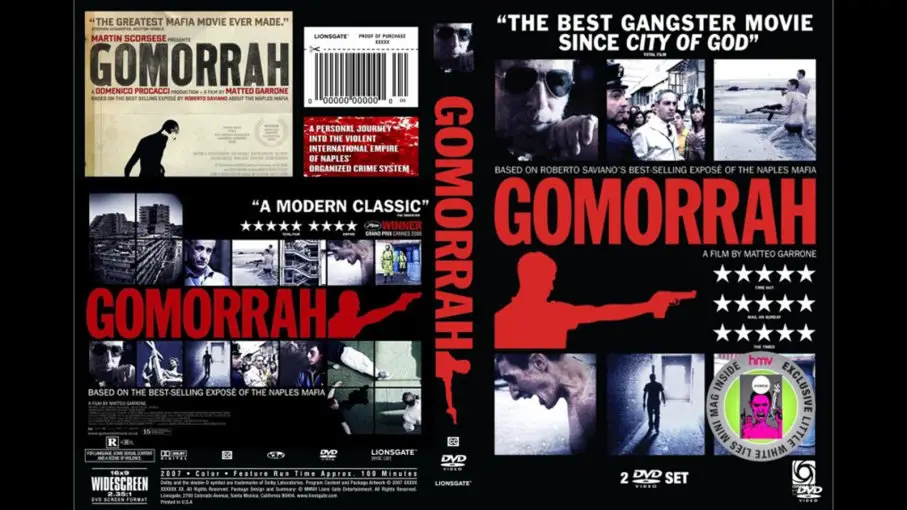The Debate About Media Glamorization Of The Mafia
This should have been expected: “The Irishman,” a film directed by the legendary Martin Scorsese has been a big hit not just among critics but also among audiences of Netflix, the premier digital video streaming service that bankrolled production. It should be noted that Netflix audiences tend to skew younger, and even though the company does not release official streaming ratings, the internet buzz around “The Irishman,” featuring Hollywood star power such as Al Pacino and Robert De Niro, suggests that younger viewers are interested in the zeitgeist that surrounded events such as the 1975 disappearance of controversial labor union leader Jimmy Hoffa, a case that remains largely unsolved and that may or may not have featured involvement of the Genovese family.
Scorsese could be to blame for the glamorization of the Italian-American Mafia; after all, he admitted as much during a recent interview with The New York Times, in which he explained that he finds the Mafia lifestyle to be glamorous, something that he has researched and injected into his films. Leave any subject to be filmed by Scorsese and it will invariably come out looking shiny and attractive; this is to be expected from a filmmaker considered to be pure Hollywood. Scorsese is a fan of renowned Italian directors who were all about flash and style no matter what topics they were dedicated to.
In the wake of “The Irishman,” there has been a rekindling of interest not just in films about the Italian-American Mafia but also about their perceived glamorization, which some critics consider to be dangerous. The Scorsese movie has been named alongside hit television series such as “The Sopranos” and “Boardwalk Empire,” both HBO productions that are part of the age of “Prestige TV.” We can almost expect that Netflix will produce miniseries dedicated to the Italian-American Mafia, but there is something interesting happening on the other side of the Atlantic, where Italian directors are switching their styles of filmmaking when tackling subjects related to organized crime in their corner of the world.
Gomorrah
If you are not familiar with Italian movies about organized crime, you should check out “Gomorrah,” a 2008 Napolitan production directed by Matteo Garrone. It is a great film about the Camorra organization of the Campania region, but it is nothing like you would expect from Scorsese, Francis Ford Coppola, or Brian DePalma, who are all Italian-American directors known for their sense of style. Garrone is a great filmmaker, but he followed the tradition of Italian productions about organized crime as being ultra gritty and hyper-realistic. “Gomorrah” almost looks like a documentary at times, and it is a fantastic depiction of modern-day criminal organizations.

Gomorrah. Directed by Matteo Garrone
“Gomorrah” got a television miniseries remake, and it is the polar opposite of the Garrone film. The TV production is slick, and the actors and actresses look like they could have been cast in a Venezuelan soap opera. The wardrobe, set decorations, visual effects, score, and camera work clearly follow Scorsese and Coppola. Can we guess which version of “Gomorrah” has resonated more with audiences and less with critics? Things do not stop there: Marco Bellocchio, a left-leaning film director from the Piacenza province of northern Italy, has been pretty busy on the interview circuit promoting “Il Traditore,” a movie that is being described as a grand opera of a Cosa Nostra scandal that unfolded in Sicily during the 1980s.
In the past, Bellocchio would have been lambasted for directing such a slick production based on a historic Cosa Nostra event. He would have been accused of glamorizing because none of his colleagues would dare deviate from the gritty formula of directing films about the numerous and powerful criminal organizations of Italy, which in some cases have partnerships with the Five Families and some of its associates.
There is, of course, a problem with glorification that translates into audience perceptions of stereotypes. There will be moviegoers, perhaps many, who think that all Italian-American boys are at risk of becoming entangled in criminal organizations. Here is something interesting, nonetheless, that involves Scorsese and “The Irishman.” It so happened that the director sought financing from traditional sources because that is what he is accustomed to; he wanted “The Irishman” to be a magnum opus released in movie theaters around the world, but his budget requirements could only be satisfied by Netflix, which has become a Wall Street darling. Instead of red carpet screenings and sold-out movie theaters, Scorsese had to accept the reality of distribution on smartphones and tablets running the Netflix app.
Scorsese sniffed at the prospect of “The Irishman” being a Netflix production and not a Hollywood tent-pole event such as the countless Marvel Avengers films, many of them directed by Italian-American brothers Anthony and Joseph Russo, who have contributed some of their profits towards funding The Italian American Film Forum, a screening of productions that highlight the diversity of Italian heritage in the United States, and which provides funding to directors who excel in this regard.
Media Glamorization of the Mafia continues…
It looks as if we are hardly done with “The Irishman” rekindling of polished Hollywood productions about the Italian-American mafia. “Mob Town” was recently released; another film about the 1957 Appalachian summit of Mafia heavy-hitters at the farm home of Joseph Barbara. Guess who was cast as Ms. Barbara? Jamie-Lynn Sigler of “The Sopranos” fame, a beautiful woman who is not really Italian but keeps getting cast in productions about the Mafia.
The late Austrian philosopher Karl Popper once gave a respectful opinion about why the Italian-American Mafia is romanticized in the film: Because it has not been able to rise to the level of raw power it hoped for. Let’s face it: the Five Families have tried to model themselves after the Cosa Nostra, but their attempts to establish members within the government have not been as successful as their Sicilian counterparts. The Camorra and ‘Ndrangheta almost specialize in this regard, and that could explain why Italian filmmakers chose to portray them as a bunch of slobby malcontents; however, as previously stated, this is changing because directors in Italy have noticed that the Mafia movies of Scorsese and Coppola are what audiences ultimately want to see.
You may also be interested in: The Irishman May Answer Hoffa Questions








